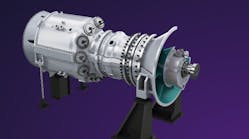Idaho National Lab Hydrogen Demonstration: Bloom Electrolyzer highly efficient at nearly 38 kWh per KG
Hydrogen producer Bloom Energy and the Idaho National Laboratory have announced the initial results of an ongoing demonstration, which reportedly shows that Bloom’s high-temperature electrolyzer can produce hydrogen more efficiently than other commercially available electrolyzers.
The results were derived after almost 500 hours of full load operation at the laboratory using Bloom Energy’s solid oxide electrolyzer at the Dynamic Energy Testing and Integration Laboratory. The tests included steam and load simulations, which replicate nuclear power station conditions.
In the pilot, it was found that the Bloom electrolyzer could produce hydrogen at 37.7 kWh per kilogram of hydrogen and with 88.5 percent Lower Heating Value to DC. Dynamic testing included ramping the system from 100% of rated power to 5% in less than 10 minutes without any adverse effects.
“The Bloom electrolyzer is, without a doubt, the most efficient electrolyzer we have tested to-date at INL,” said John Wagner, director, Idaho National Labs. “When hydrogen is produced from a clean, 24/7 source, like nuclear, it can help us address some of the significant challenges we face around decarbonization. Pairing the research and development capabilities of a national laboratory with innovative and forward-thinking organizations like Bloom Energy is how we make rapidly reducing the costs of clean hydrogen a reality and a real step toward changing the world’s energy future.”
More on the Idaho National Laboratory
INL study: Small Reactor Nuclear offers Fuel-secure, Carbon-free option for Net-Zero Microgrids
Xendee, INL deploy first intermunicipal Microgrid in Puerto Rico
According to the INL study, the Bloom electrolyzer operates at high temperatures, requiring less energy than PEM and alkaline electrolyzers to split the water molecules. It can produce hydrogen approximately 45% more efficiently than PEM and alkaline electrolyzers.
“We are proud to have partnered with Idaho National Laboratory on this landmark demonstration. By combining our Bloom electrolyzer with steam, the laboratory has been able to validate that the DC electrical efficiency for our electrolyzer is better than any reported commercial or demonstration unit in the world for hydrogen production. This is an important milestone as we work to build a hydrogen economy,” said KR Sridhar, founder, chairman and CEO, Bloom Energy.
Hydrogen is a growing future hope for the power generation industry because it does not contain a carbon atom or release CO2 upon combustion. It can only be produced by electrolysis (using electricity to charge and separate the H2 from water) or by steam reforming of methane gas to isolate the H2 element, the latter of which is a carbon intensive method.
To be considered truly “green hydrogen,” the electrolyzer would be powered by a carbon-free resource such as wind, solar, hydro or nuclear generation.





